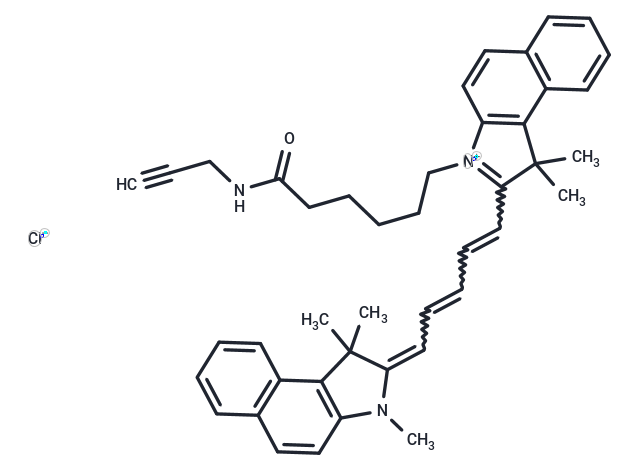Shopping Cart
- Remove All
 Your shopping cart is currently empty
Your shopping cart is currently empty
Cyanine5.5 alkyne chloride is a far-infrared fluorescent dye containing an alkynyl (-C≡C-) functional group. It is suitable for covalent binding with azide (-N₃) modified biomolecules via click chemistry. Its chlorinated form may be used for labeling applications in specific chemical environments and is widely used in the fields of bioimaging and fluorescence detection.

| Pack Size | Price | Availability | Quantity |
|---|---|---|---|
| 1 mg | $85 | 7-10 days | |
| 5 mg | $208 | 7-10 days | |
| 25 mg | $623 | 7-10 days |
| Description | Cyanine5.5 alkyne chloride is a far-infrared fluorescent dye containing an alkynyl (-C≡C-) functional group. It is suitable for covalent binding with azide (-N₃) modified biomolecules via click chemistry. Its chlorinated form may be used for labeling applications in specific chemical environments and is widely used in the fields of bioimaging and fluorescence detection. |
| Molecular Weight | 656.3 |
| Formula | C43H46ClN3O |
| Cas No. | 1628790-37-3 |
| Storage | keep away from direct sunlight | Powder: -20°C for 3 years | In solvent: -80°C for 1 year | Shipping with blue ice/Shipping at ambient temperature. |

Copyright © 2015-2025 TargetMol Chemicals Inc. All Rights Reserved.